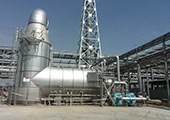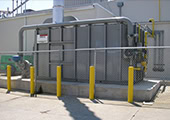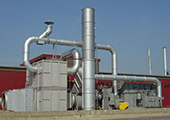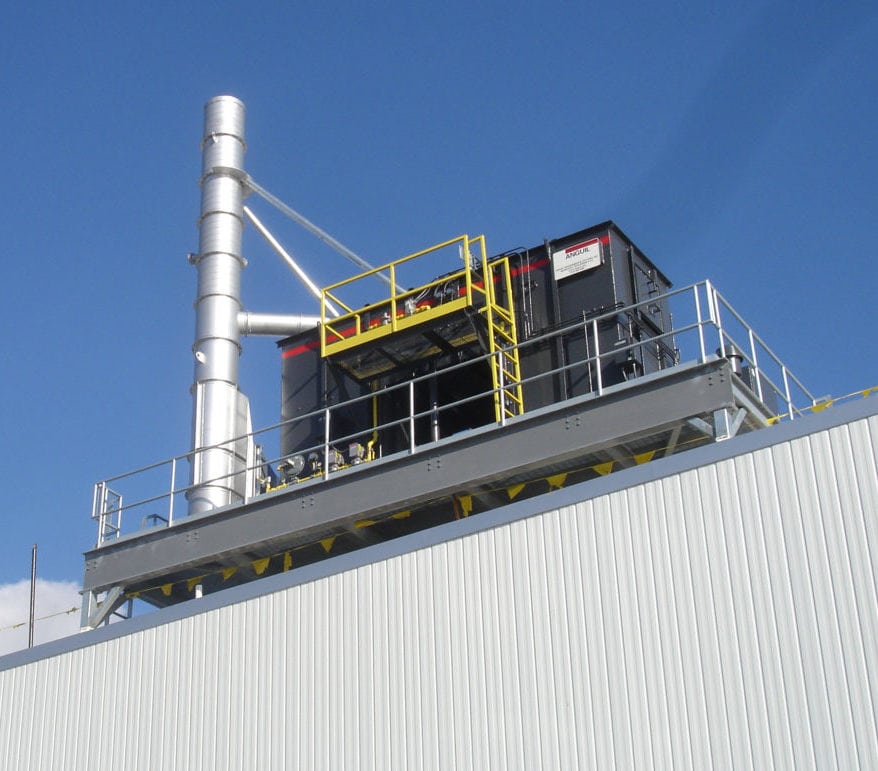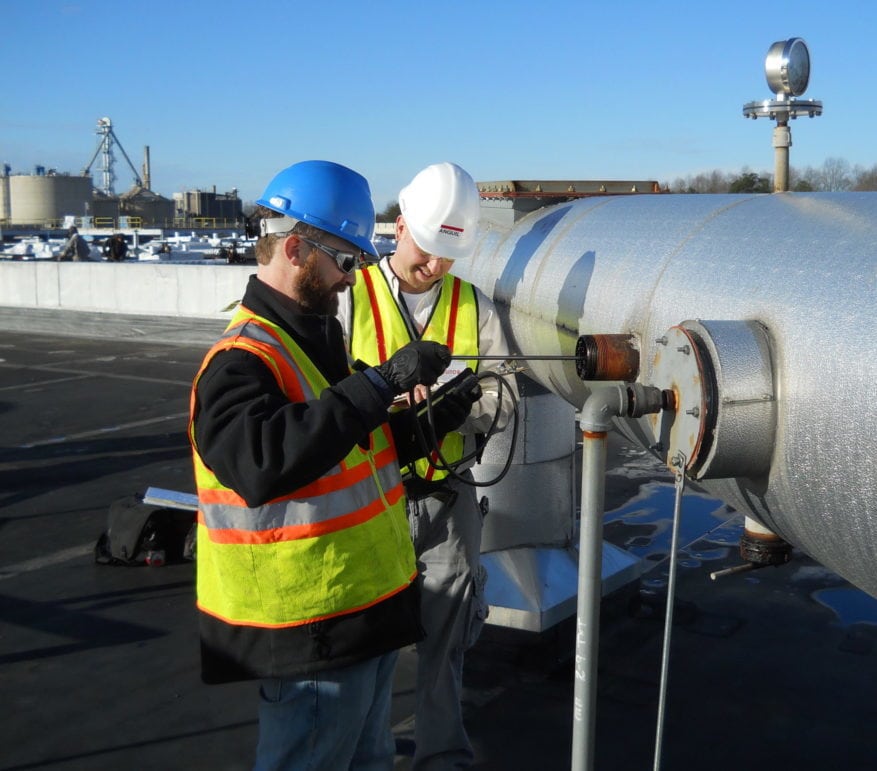 Widely considered to be the most energy-efficient oxidizer, Anguil’s Regenerative Thermal Oxidizer (RTO) uses ceramic media to recover upwards of 97% of the available energy.
Widely considered to be the most energy-efficient oxidizer, Anguil’s Regenerative Thermal Oxidizer (RTO) uses ceramic media to recover upwards of 97% of the available energy.
What makes our RTO so popular is its ability to repurpose the thermal energy generated during operation to reduce operating costs and energy consumption of the system itself. The regenerative component makes it capable of fuel-free operation at very low VOC concentrations.
WHAT SETS ANGUIL’S RTO APART?
Anguil’s first RTO was designed and manufactured in the early 1990’s. Since then, our design has undergone countless enhancements with operator input always at the forefront.
- Destruction efficiency (99+%) and thermal energy recovery efficiency (up to 97%), guaranteed compliance with industrial regulations
- Custom-designed poppet valves ensure minimal leakage and thus high destruction efficiency and optimized heat recovery
- Small equipment footprint
-
Product Overview
Benefits of Anguil’s RTOs
- System pressure drop resulting in reduced electrical consumption
- Multiple designs for easier and faster installation
- Greater system flexibility and versatility
- High reliability and long-life expectancy (15-20 years+)
-
Air Flow Range & Efficiency
Air Flow Range
- 3,000-70,000 SCFM (4,815-112,350 Nm3/hr) / Single Unit
- 70,000-500,000 SCFM (112,350-802,500 Nm3/hr) / Multiple Units
Concentration Range
- 0 – 25% LEL
Destruction & Removal Efficiency
- 99%+
-
Ideal Applications
Ideal Applications
- High DRE (Destruction Rate Efficiency) & TER (Thermal Energy Recovery) requirements
- Large flow, low concentration process streams
- Wide range of temperature and contaminant capability
- Corporate sustainability drivers: highly energy efficient, reduced utility costs, low carbon footprint
DESIGN FEATURES AND OPTIONS FOR ANGUIL TECHNOLOGY
Features
- Pre-assembly, wiring, and testing as much as possible prior to shipment
- Can handle process flows up to 25% Lower Explosive Limits (LEL) with self-sustaining LELs as low as 3%
- The burner is sized for full flow, zero process VOC emissions so that the RTO can maintain temperature and VOC destruction efficiency over the entire range of process operation.
- Bake-out capabilities designed to remove organic particulate buildup
- Hinged access doors for ease of maintenance
- Variable Frequency Drives (VFDs) to support high volumetric turn-down during low-process and idle conditions
- Compliance with FM Global and other international certifications
Options
- Alternative heating options including electric and multiple gas fuel inputs (natural gas, propane, hydrogen) and ultra-low NOx
- Specialty designs for high-temperature, corrosive, or silicon-bearing compound conditions
- Two-chamber and multi-chamber configurations
- Hot Gas Bypass (HGB) for high VOC emission concentrations
- Induced or forced draft fan arrangements
- Supplemental Fuel Injection (SFI) with mixing vanes for fuel efficiency, low NOx operation, burner redundancy, and uniform temperature distribution
- Acid gas scrubber module with a completely integrated control system
- Secondary Heat and Energy Recovery systems for waste heat utilization
- Integrated process air pre-heating to minimize condensation and allow the use of less expensive materials of construction
Operating Cost Reduction Strategies
- Cascade of process exhaust emissions to low total exhaust flow and capital/operating cost.
- Secondary heat and energy recovery solutions
- Oxidizer service and Preventive Maintenance Evaluations (PMEs)
HOW DOES THE RTO TECHNOLOGY WORK?
Regenerative thermal oxidizers are designed to destroy HAPs, VOCs, and odorous emissions discharged during industrial and manufacturing operations. They achieve emission destruction through high-temperature thermal oxidation—a process that employs a combination of temperature, residence time, turbulence, and oxygen to convert pollutants into carbon dioxide and water vapor.
Operations within RTOs occur as follows:
- System fan draws process emissions into the RTO
- The process stream is routed into the poppet flow control valves
- Poppet valves direct the untreated process emissions into the first chamber filled with ceramic energy recovery media
- High temperature and turbulence quickly break apart the contaminated compounds in the combustion chamber
- The purified stream exits via the second media bed, releasing up to 97% of its heat value
- Every few minutes, the poppet valves switch, and the flow reverses direction. The captured heat from the exiting purified stream preheats the incoming dirty process emissions.
- Cleaned, cool air is released to atmosphere via the exhaust stack
At Anguil, our engineers are always available to discuss your specific application and determine if an RTO or RCO is the best solution for your emission control needs. With decades of experience designing, manufacturing, installing and servicing air pollution control systems worldwide, we have the knowledge and expertise to provide custom solutions that meet the unique compliance needs of each customer. Contact us today to learn more about our RTO technology.

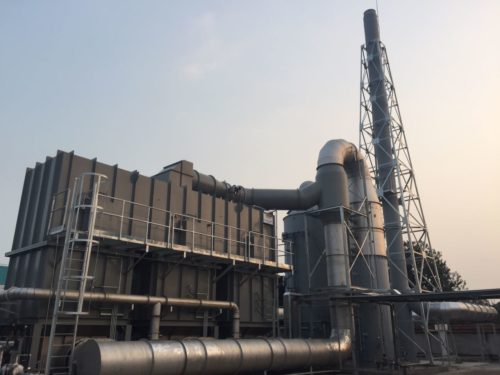
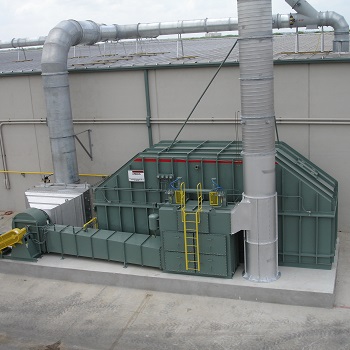 When catalyst is added to the media chambers of an RTO it is then referred to as an RCO. The abatement device still relies on high energy recovery to minimize auxiliary energy usage. However, the
When catalyst is added to the media chambers of an RTO it is then referred to as an RCO. The abatement device still relies on high energy recovery to minimize auxiliary energy usage. However, the
